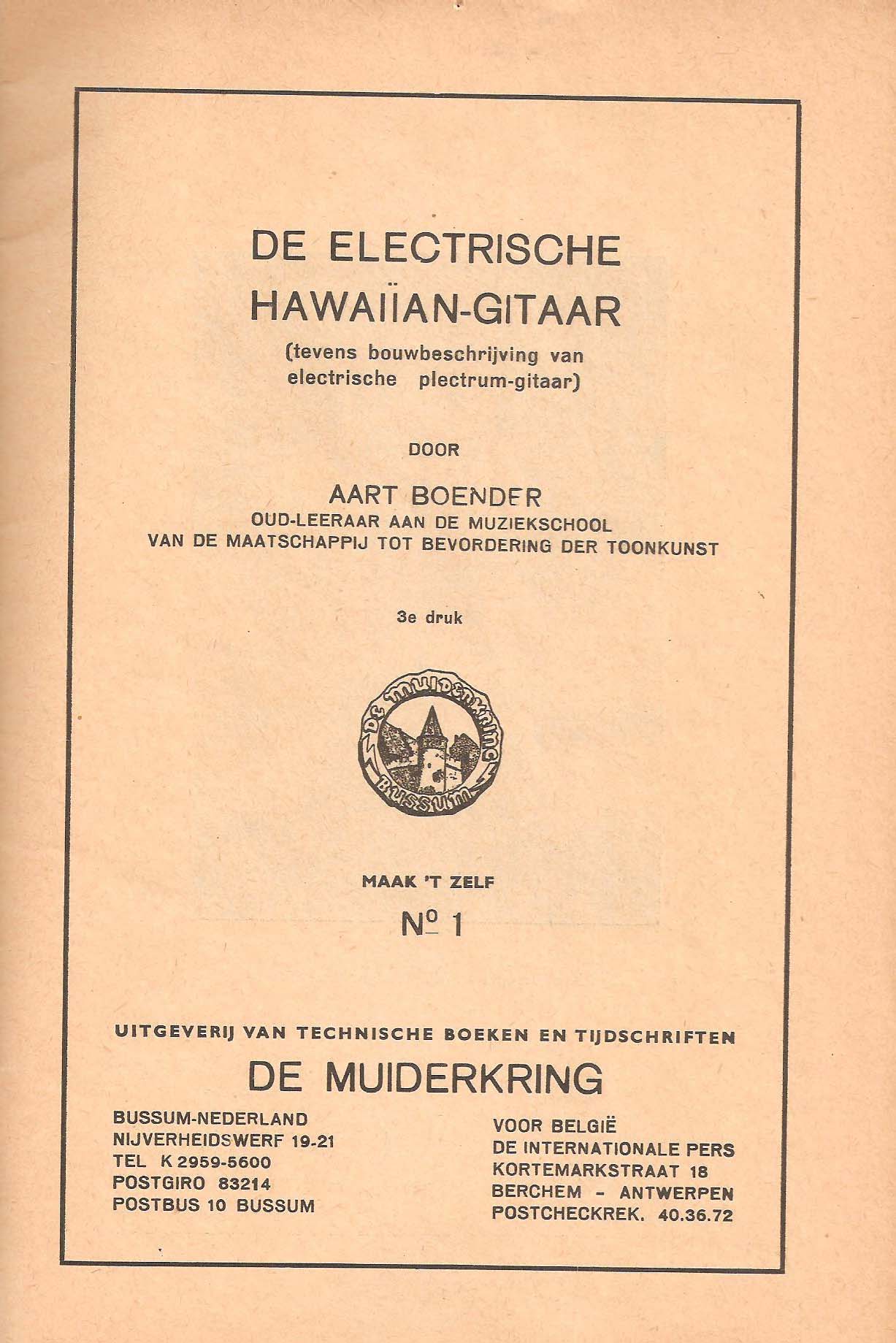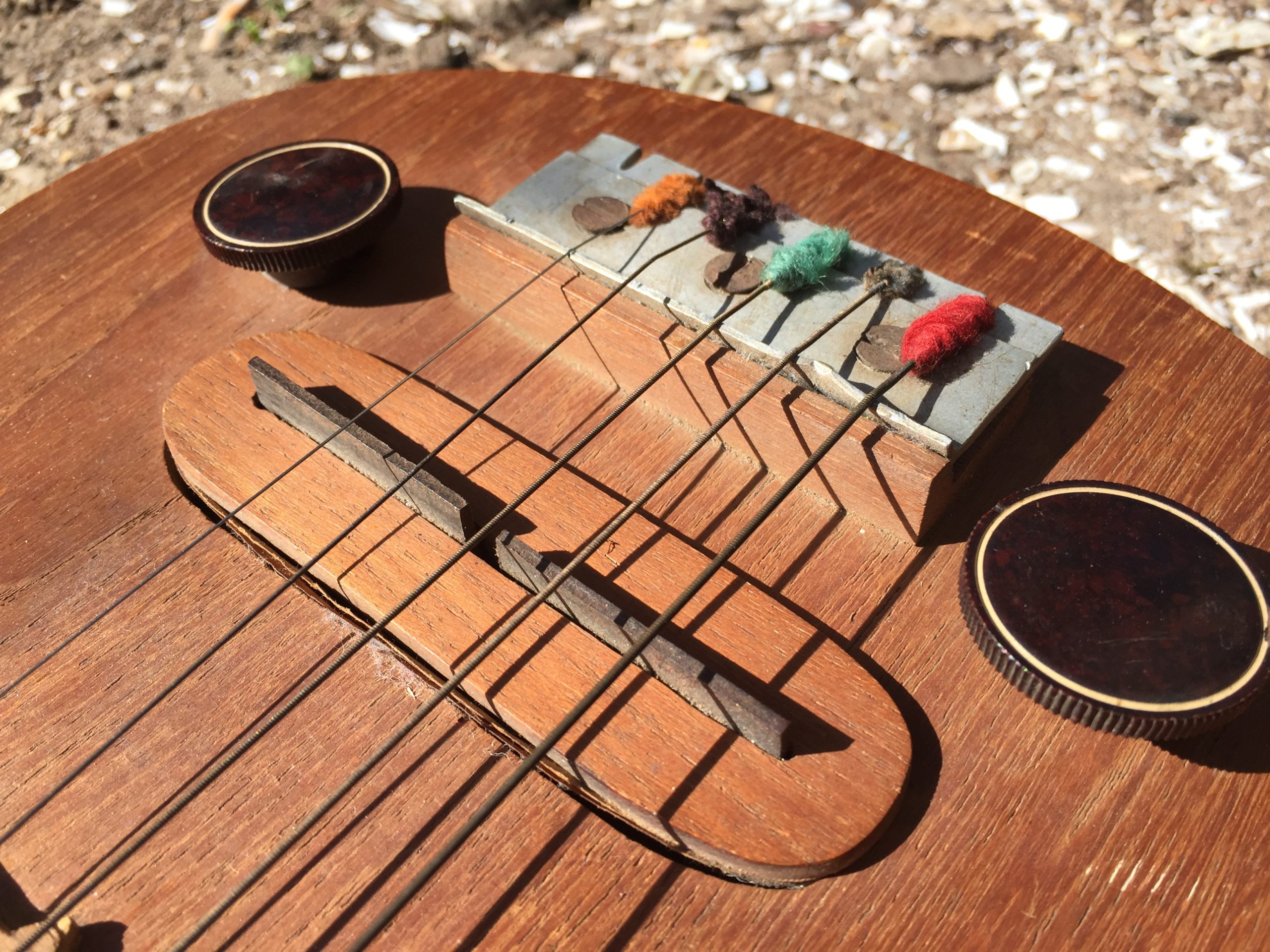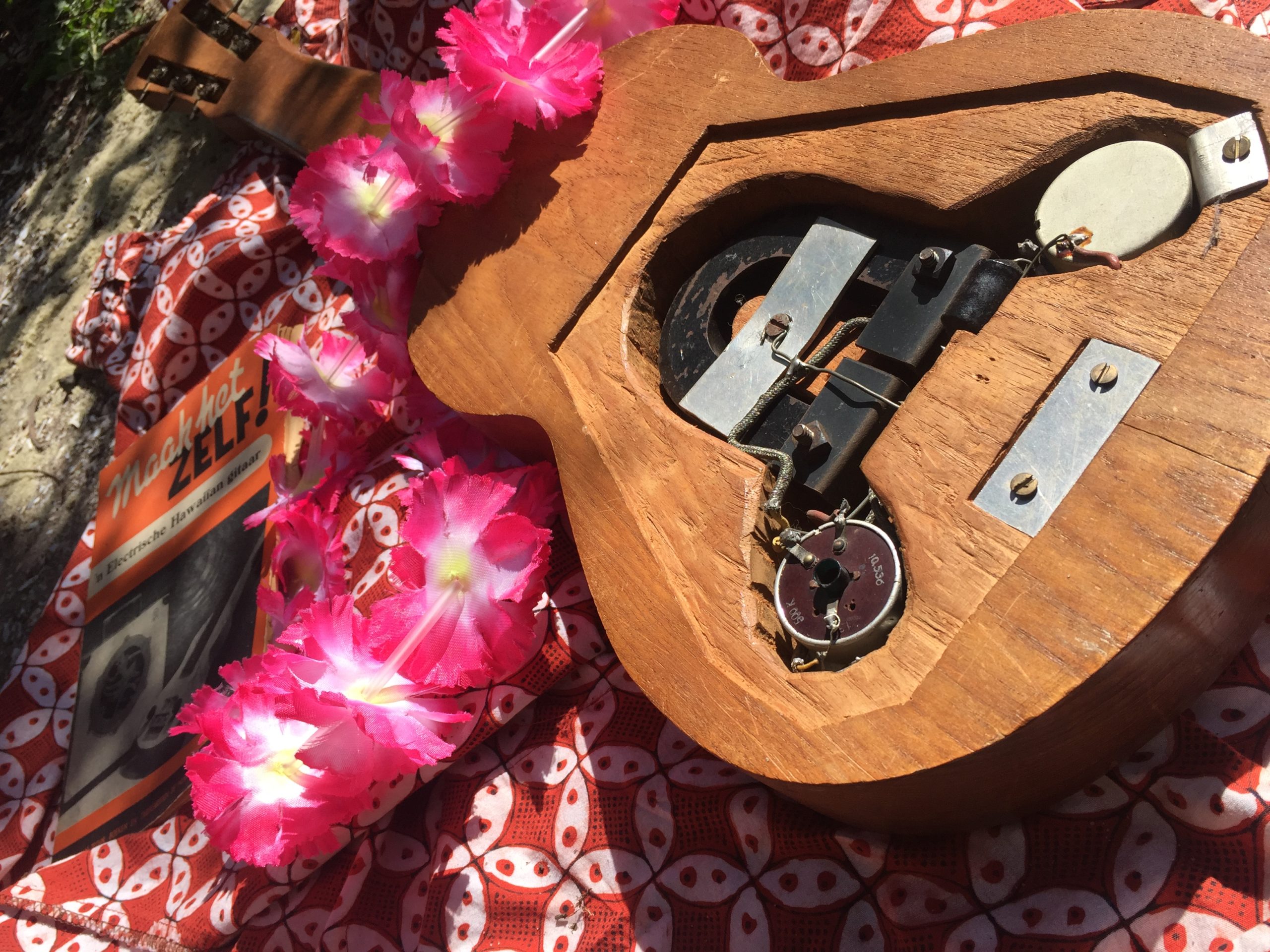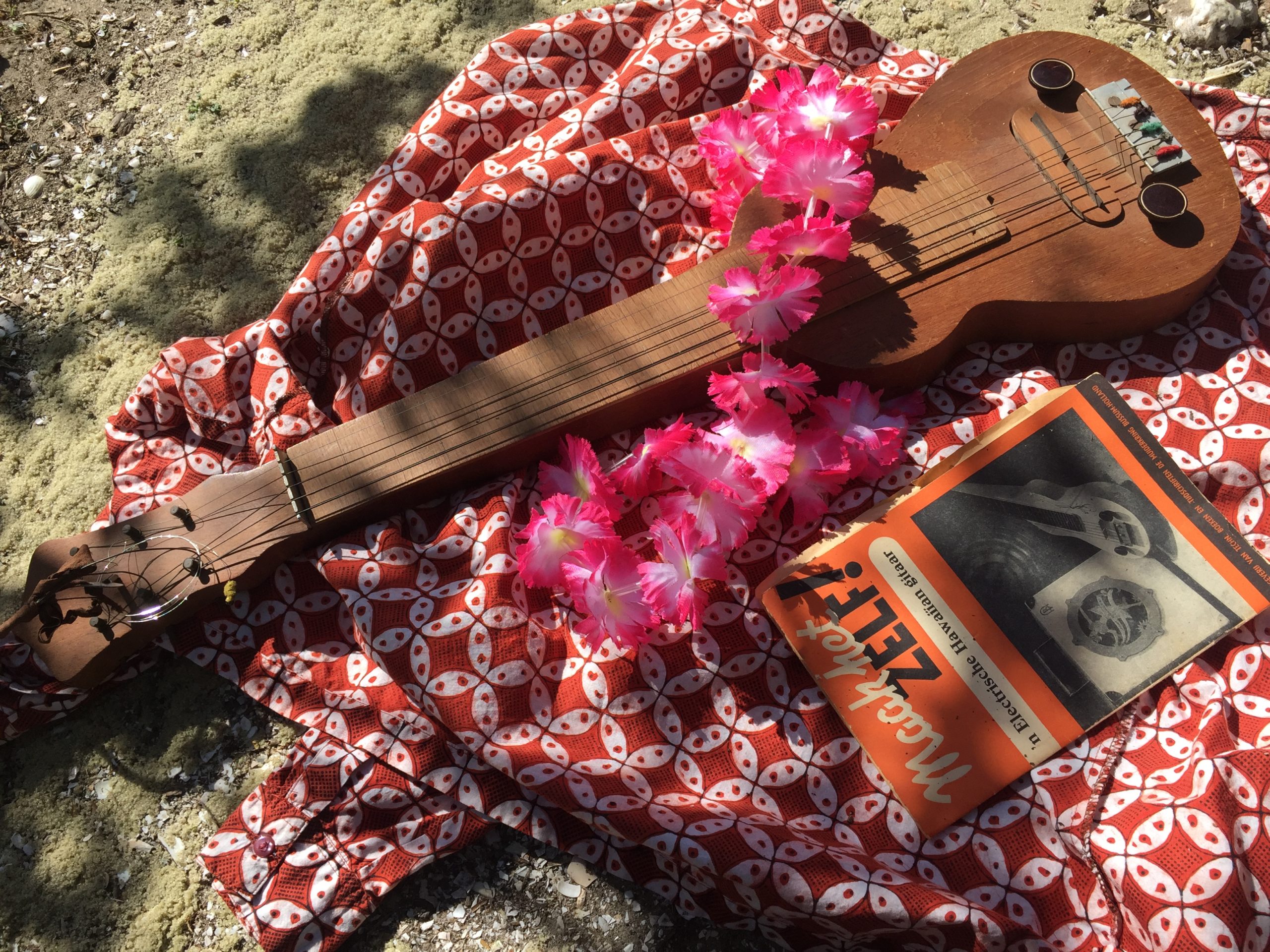Recently, the rehearsals of my guitar, bass and drums trio were temporarily relocated to the house of our bass player, in a quiet uptown part of Wageningen. With a light set-up, we can play in the living room there, without disturbing the neighbors too much.
And so it happened, that at the onset of last week’s rehearsal, our bass player murmured something like “wait a minute I have to get something from upstairs”. Seconds later he showed up with something that looked like a kind of rudimentary guitar to me, almost from the stone age. “So I got this from an old neighbor who has unfortunately deceased a couple of years ago”, he explained. “This guy was incredibly talented and he built this Hawaiian lap-steel guitar, based on this little booklet”. He then showed us an old instruction manual from the 1950s. “Apart from a loud hum, the thing should still work”, he mentioned, “so if you guys are interested, by all means.”

As it seems pretty unique to see an intact combination of such a booklet and a home-built guitar, and given their relative earliness in the history of the electric guitar, I thought it would be interesting to feature them on this website. We agreed that, afterwards, I would transfer the guitar to my other bandmate, who sees some more practical use for it. You see, Hawaiian music nor steel guitar is entirely my cup of tea…
Little surprise, therefore, that I know virtually nothing about the Hawaiian music scene in the Netherlands. A quick web search for the name “Aart Boender”, the author of the booklet, yielded some interesting results however. Aart is portrayed in the booklet with his band the “Wailana Hawaiians”. In the search results that popped up, that band was far overshadowed by another Dutch band: “The Kilima Hawaiians”. They were apparently considered the rage in post-war Holland!
Dutch Hawaiian band the Kilima Hawaiians in action, featuring Moluccan lap steel guitar virtuoso Rudi Wairata.
Oh, and indeed, thinking of post-war Holland, the first image that comes to mind may not exactly be that of exotic Hawaiian music and hula-hoops, but rather one of fear, boredom and loneliness – as portrayed in Gerard Reve’s book “The Evenings”, for instance… Maybe, Hawaiian music just surfaced at exactly the right place and at the right time, to cheer things up a bit. The question remains how it ended up in the grey and drizzly Netherlands then?
Often, when Dutch music history takes an interesting turn, cultural influences from former colony Indonesia play a role. Think of the Indo-rock genre for instance, which was already mentioned in our earlier Echolette story. Hawaiian music is no exception here. I learned that it had first spread from Hawaii to the relatively nearby Maluku (Moluccas) islands in Indonesia. When people from the Moluccas then came to the Netherlands after WW II, they took Hawaiian music with them. More and more Dutch musicians also started embracing the new style and at a certain point, there must have been more than 600 Hawaiian bands in the Netherlands.
A perfect illustration of this story is the life and music of Rudi Wairata, a lap steel guitar virtuoso who played with the Kilima Hawaiians in the late 1950s. He learned to play steel guitar as a child in Indonesia, by listening to records of Hawaiian originals Sol Ho’opi’i and Andy Iona. Later on, in 1950, he obtained a music scholarship for the Royal Conservatory of The Hague and went to the Netherlands. The rest is history, including his writing of what is perhaps the first Indo-rock song ever: “Rock’n Roll Breezes“.

Would the homemade lap steel guitar that we ‘re looking at here also have played such a glorious role in the post-war Hawaiian invasion? We will probably never know. What is certain however, is that its maker did an excellent job. The guitar was machined and carved from a single piece of wood, and achieving the result that he obtained still seems a challenge today! The builder must also have been quite inventive in sourcing all the required parts, which was probably not that easy back in the day.
The guitar’s pickup was made from a large horse-shoe magnet, with two large iron pole pieces attached to it. The coil was manually wound around those pole pieces. The fingerboard was made from a separate thin sheet of wood, glued on top of the neck. Bridge and nut were crafted from little plates of aluminum. Standard tuning mechanisms were used, whereas the recommended volume and tone potmeter knobs were sourced from a company called AMROH. Interestingly, AMROH was an international enterprise that not only had an own factory (Amutronics, Muiden) but also its own publishing house: De Muiderkring in Bussum… who published the Aart Boender book, among others. Clever marketing! They also published several magazines, such as Radio Bulletin and Hobby Bulletin.

